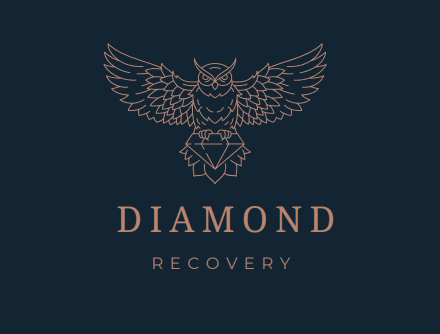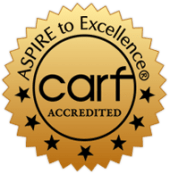Living with a learning disability is all too often a silent struggle where those living with learning differences face daily challenges in school, social settings, and the workplace. Struggles that lead to feelings of frustration, low self-esteem, anxiety, and isolation. For millions of Americans, this daily challenge of decoding words, processing numbers, or organizing thoughts carries a weight far beyond the classroom. Over time, these emotional burdens can take a toll on mental health and, for many, increase the risk of turning to substances as a way to deal with their problems.
The statistics paint a clear picture: people who have learning disabilities are more likely to experience co-occurring mental health issues and substance use disorders. Research reveals that approximately 30% of individuals with learning disabilities have a mental health condition, and those individuals are at greater risk for substance abuse. These overlapping challenges are a call to action. Addressing learning disabilities alongside mental health and substance abuse is vital for meaningful, lasting recovery.
In this article, we will clearly define what learning disabilities are. Although tricky to spot, their prevalence is eye-opening when looking at the statistics surrounding those living and struggling with them daily. Looking at five of the most common learning disabilities and examining what they are and their effects on the person, you’ll learn how they can contribute to mental health struggles and substance abuse. Finally, we will guide you through how addiction rehab centers can (and should) address all co-occurring conditions in a unified, supportive way. If you or a loved one is seeking treatment, we will provide important questions to ask to ensure a tailored, integrated treatment for both mental and substance abuse conditions, along with the right support for learning disabilities.
What Are Learning Disabilities?
Learning disabilities are a common challenge among many people. Being a variety of neurological conditions, learning disabilities affect how a person processes, stores, or retrieves information. This leads to trouble in specific areas like reading, writing, math, or communication. Learning disabilities originate in the brain and can impact many cognitive functions.
Learning disabilities are distinctly different from intellectual disabilities, which involve broader cognitive limitations. People with learning disabilities typically have average or above-average intelligence but face hurdles in processing certain types of information. Having a learning disability in no way reflects a person’s intelligence.
Learning disabilities are often misunderstood, leading to stigmas surrounding those who live with them. Let’s look at two very common, and very wrong myths surrounding learning disabilities:
- A common misconception is that learning disabilities only affect children who later grow out of them. The reality is, that these are lifelong conditions that persist into adulthood.
- Another harmful myth is that learning disabilities are a sign of laziness or lack of trying. This could not be further from the truth. People with learning disabilities often work harder to compensate for their challenges.
Learning Disabilities in Numbers
Although hidden, learning disabilities are a common challenge that many people live with in silence. Let’s look at a few statistics that show how prevalent these conditions are:
- According to the National Center for Learning Disabilities, approximately one in five people in the United States live with learning and attention issues.
- Males are diagnosed at a higher rate than females by a 2:1 ratio.
- 4-6% of adults live with learning disabilities, many remaining undiagnosed.
- A staggering 30-50% of people living with learning disabilities also have a co-occurring mental health or substance abuse condition.
Lack of awareness and under-diagnosis both contribute to the barriers faced by those struggling with a learning disability and/or co-occurring problems like mental health or substance abuse issues. Stigma and shame play a major role and contribute to workplace and relationship issues, making learning disabilities an issue that impacts every part of an individual’s life.
Five Common Learning Disabilities
1. Dyslexia: Dyslexia is the most prevalent learning disability that causes difficulty reading, spelling, and decoding words or language processing. People with dyslexia may experience shame, frustration, and failure in academic settings. Which could lead to the development of self-esteem issues. From here, the mental challenges can snowball.
2. ADHD: ADHD, also known as attention deficit disorder or hyperactivity, is characterized by persistent trouble with attention, impulse control, and/or hyperactivity that is inappropriate for a person’s age. Approximately 4-5% of adults are affected by ADHD. Alarmingly, those with ADHD are two times more likely to develop substance abuse disorder than those who don’t have it. Ultimately, this disorder can also affect all aspects of daily life, including work, relationships, and overall well-being.
3. Dyscalculia: This learning disorder presents challenges with understanding numbers and mathematical concepts. Early on in life, this disability creates frustration involving calculations in school, but as an adult, it can cause issues with financial management and the task of managing money. Individuals who suffer from this disorder can experience increased anxiety surrounding anything involving numbers, which significantly impacts daily life. Like most learning disabilities, if left unaddressed, it can cascade into many more problems.
4. Dysgraphia: Dysgraphia is a learning disability that affects writing, causing difficulty with handwriting, spelling, and also organizing thoughts on paper. This is a challenge that can lead to embarrassment and avoidance of communicating with others. Also causing feelings of inadequacy, dysgraphia can lead to poor self-esteem and social isolation, along with a whole host of much more devastating problems like depression and substance abuse.
5. Auditory Processing Disorder (APD): APD is a learning disorder that is characterized by difficulty in processing and interpreting sounds, especially in noisy environments. This often leads to miscommunication, social withdrawal, and challenges following instructions, leading to poor academic and work performance.
The Connection to Mental Health and Substance Abuse
- The toll that learning disabilities, especially left undiagnosed and untreated, is significant and increases the likelihood that mental health issues and/or substance abuse problems arise.
- Reduced self-esteem, academic difficulties, social isolation, anxiety, depression, and relationship problems are all potentially devastating to a person and may lead to self-medication. Alcohol or drugs may offer temporary relief or escape.
- Individuals with learning disabilities fight unique stressors such as the inability to qualify for certain careers and the feeling of being an outsider.
- The mental health symptoms of learning disorders magnify substance abuse, and vice versa. This makes for a vicious, negative cycle.
- Statistics show that 40-60% of individuals in substance abuse treatment have learning disabilities.
How Addiction Rehab Can Help
For the most effective treatment, co-occurring conditions need to be treated together. Treating substance abuse, mental health, and learning disabilities with a tailored and integrated approach is ideal for lasting recovery. The risks of ignoring learning disabilities during drug rehab will fail to address the root cause of a person’s problems and increase the chances of relapse.
Rehab centers can offer customized treatment plans to address all aspects of healing: mind, body, and spirit. Offering proven therapies like cognitive behavioral therapy that are adapted for cognitive challenges, providing holistic opportunities to regain confidence, and supportive peer groups with those who can relate are all benefits of an addiction rehab center.
Therapists can modify their treatments, such as instead of writing utilizing an oral journal, audiobooks instead of reading, or short sessions for those with attention problems. Simplified materials, visual aids, and extended processing time are also ways accommodations can be made.
Questions to Ask When Choosing a Rehab Center
Nothing is more important than choosing a treatment center for yourself or a loved one and receiving the help needed for a healthy future full of hope. If living in or near the Salt Lake Valley, calling an addiction rehab center in Salt Lake City and asking the following questions can help determine if it’s the best fit for you or your loved one:
- Does your facility screen for learning disabilities during intake?
- Do you offer support for clients with learning disabilities?
- Do you offer customized treatment plans for different learning and communication needs?
- What accommodations or tools do you have in place to work with those who have learning disabilities?
- Do you offer resources post-rehab to help manage and provide additional support as your clients transition back into daily life?
Finding Help
Living with a learning disability can feel like a silent battle, where daily challenges often lead to frustration, isolation, and, for some, mental health struggles or substance abuse. But, take comfort, there is hope in understanding these connections. By addressing learning disabilities alongside addiction and mental health, customized treatment plans with integrated care can pave the way for lasting recovery. We have defined learning disabilities, explored common ones like dyslexia and ADHD, and highlighted how rehab centers can offer tailored support through adapted therapies and accommodations. With the right questions, you can find a program that truly meets your needs and turn your challenges into opportunities for growth. Stay courageous and find help today.

















